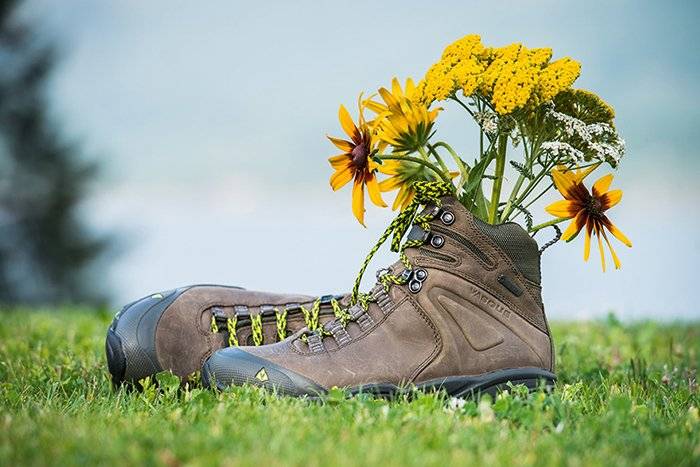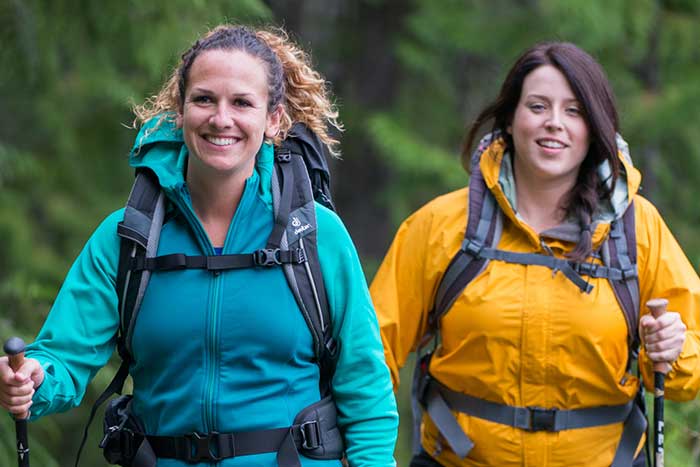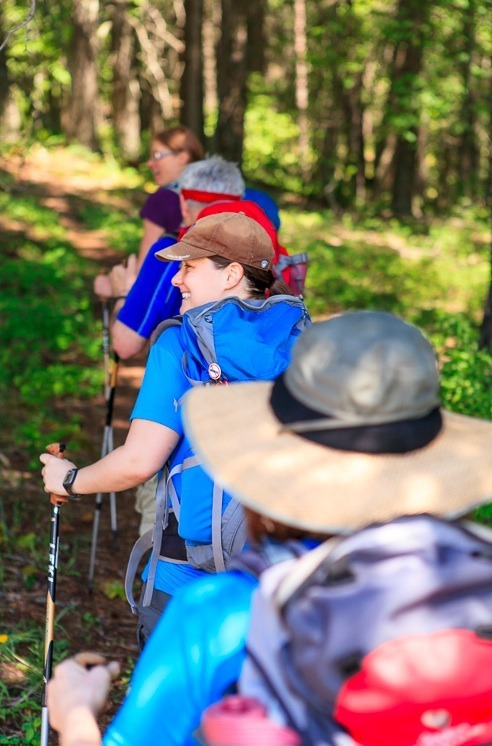How to Properly Fit a Pair of Hiking Boots

Before venturing out for a hike, it’s important to have the right footwear. There are two things you need to know to find the perfect pair of hiking boots. Firstly, get acquainted with the different types of boots, and secondly, how to ensure a proper fit. We’ve laid out the basic information necessary to fit a pair of boots that will carry you comfortably into nature.
Types of Boots
Light Hikers AKA Trail Runners
Typically made of fabric and breathable mesh with a DWR finish, these are best suited for maintained trails. They have flexible soles and come with different grip types depending on terrain. Great for walking, trail running, and hiking for shorter distances. Depending on the strength of your ankles, you may want to opt for a higher boot.
Light Over-Ankle Hikers
With a thicker sole, these are the better option for day hikes on maintained trails. They’ll carry you nicely over rocks, roots, and up those steep grades while giving your ankles a bit more support for your way down. Commonly found made of leather and/or fabric with a DWR finish.
Backpacking Hikers
These boots are intended for multiday hikes into the backcountry. They have high ankle supports and thick soles designed to provide support for carrying more weight over both maintained and unmaintained trails. Also made of leather and/or fabric with a DWR finish.
Water-Proofing Your Hiking Boots
Most hiking boots come with a durable water-resistant finish. Depending on the quality of the boot and frequency of use, this can wear off after a short period of time. If you notice that water does not quickly bead and roll off a boot’s surface, it’s time to add a waterproofing treatment.
First, clean the boot and then spray on or apply a waterproofing product such as Nikwax or Granger’s. Each company makes products specific to the material of your boot, whether it’s leather, suede, nubuck, or synthetic. Be sure to follow the instructions on the product’s label and once you’ve completed the application let the boot air dry – do not use a hairdryer.
Ensuring Proper Fit
Any reputable outdoor gear store or shoe store will have trained boot fitters on hand to take you through the selection process. They will measure all aspects of your foot (from length to width to arch size) and then suggest a number of different pairs of shoes to try. Try on at least five different pairs of shoes and be sure to lace them while standing up and putting your full weight on your foot. The correct boot for you should feel comfortable right from the beginning.
Tips to ensure the perfect fit
Take your time
Budget the time needed to be fitted and make the proper choice. Don’t show up to buy boots near the store’s closing time and then rush a decision.
Wait until the afternoon to shop
Feet swell as the day progresses, and you want the boots to fit well when they’re at their “pudgiest.”
Bring or buy good socks
Bring your own merino wool or similar wicking-style socks to wear while trying shoes. We can’t say enough about the necessity of wearing a quality sock when you hike. They can make the difference between all-day comfort or misery. So many people pay top dollar for good boots, and then skimp when it comes to socks. Expect to pay a minimum of $15-$25 per pair. Merino wool is highly recommended, and there are many good synthetics in the market as well. Cotton socks hold moisture and create blisters.
Consider your foot’s measurements
Good shop attendants will measure everything about your foot before you even consider putting a shoe one. This includes length, width, volume, and arch height. Regarding length, when the boot is unlaced and the toes are pushed to the front of the boot there should be ¼ inch of space at the back of the boot. This small amount of space is necessary for some “give” when going up and down hills.
Note how they feel
The right boot for you should feel comfortable from the beginning. Do not purchase a boot thinking that the comfort level will rise after a break-in period. If something is “off” in the store, then time and wear could make it worse, not better. Take time in the store to put the boots through their paces, and then wear them for several days indoors to make sure that no trouble areas develop. If during this trial time, a sore area is noted, return the boots to the store and try again. The perfect boot is out there, and this initial attention to detail will reward you with happy feet on the trail. Plan your first few hikes to be short ones, so that you and your new boots can gradually become acquainted.
So whether your walking on a gravel path, running a trail, or camping on mountain tops, use this guide to help find the right footwear to take you there!
What is Mountain Trek?
Mountain Trek is the health reset you’ve been looking for. Our award-winning retreat, immersed in the lush nature of British Columbia, will help you unplug, recharge, and roll back years of stress and unhealthy habits. To learn more about the retreat, and how we can help you reset your health, please email us at info@mountaintrek.com or reach out below:







